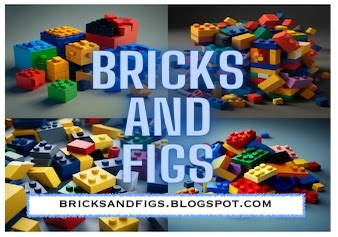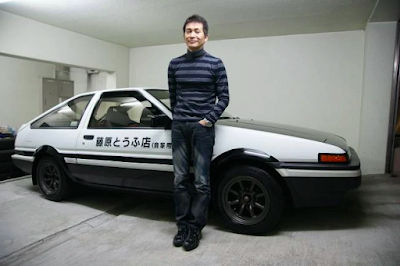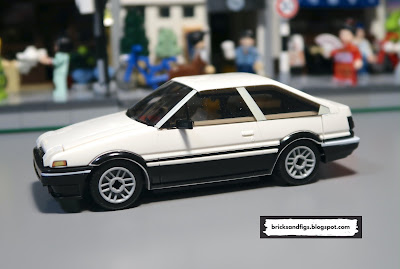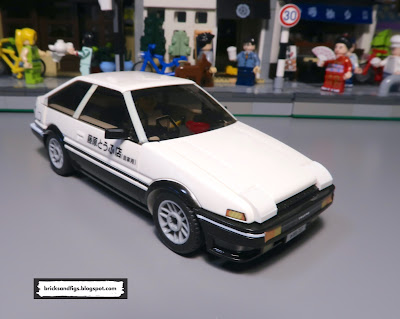Hello brick fans! I'm here to show you my latest creation and yes, it's
another modular building.
This set started life as the Sembo Crab Shop 601070 which were readily
available on Aliexpress about three years ago. The shop is one of four
buildings in a series of Japanese themed facades. The shops are harder
to find these days, with only
one or two stores on Aliexpress selling them.
This is how the set came originally
before my modifications. It was basically a small building facade with a
building that was about 8 studs deep with a minor interior setup.
As soon as I saw this set, I had to get it and turn it into a Lego style modular
building. Well, it's been three long years but I've finally achieved my
goal.
First off you will notice that I narrowed the facade of the shop from 20 studs
wide to the standard 16 studs wide to make it consistent with all of my other
16 stud wide modular buildings. The most challenging aspect of this was
trimming off the sides of the fabric awning. To get a nice straight
edge, I used a paper cutter.
There are four tan coloured arms that hold up the awning and they are attached
by pre-made holes in the awning. To make it fit 16 studs wide, I had to
reposition the awning arms and then used a hole punch to put new holes to
where the arms attached.
The tiled roof overhangs were originally only 2 studs deep on both the first
and second floor. I expanded the roof tiles to be six studs deep.
The vertical sign was moved from the right side of the building to the left.
The entrance to the shop was relocated as was some of the signage.
After losing the one red crab that came with the set, I had to buy some
replacement crabs and lobsters from Aliexpress. That resulted in crab shop
expanding its offerings to lobsters and fish as well, hence the new improved
seafood setup in front of the shop.
From the side, you can see that the building's proportions, extending all the
way back to use up most of the 16x32 baseplate, which was converted to the MILS
system. To construct the shop building walls, I used a hodge-podge of
bricks from various not Lego brands. Definitely no colour consistency
here!
The first floor side wall can be popped off for picture taking, and the second
floor can be removed entirely from the first floor. The roof also comes
off.
The rear of the building is rather plain looking, with only a door for
deliveries and an empty crate to be returned to the seafood wholesaler. I
decided to make all the second floor windows asymmetrical, just because.
More unmatched brick colours, yuck! The white patch of bricks is the
background for one of the fish tanks inside. Those black squares are
actually dark tinted windows, courtesy of some set from Sluban. The crab
shop can be displayed either as a standalone building or part of a row of
Japanese themed shops.
Before we tour the interior, I just want to say, this awesome crab is purely
the reason why I was drawn to this set. It reminds me of the actually
crab restaurants that can be found in Osaka, Japan. I had to extend the
vertical sign out further from the building to make it more visible. All
of the Sembo stickers that came the set are bit too oversized for my liking.
Ok, here we are inside the shop, looking out. As you can see we have the
shop owner displaying his fresh seafood to anyone who will notice. He's
one of the original minifigures that came with the set and he even has a crab
on the back of his uniform, which I didn't notice until just now, lol.
I built this giant tank of seafood for the storefront. At the end of the
day, you can actually slide the front door closed. I borrowed that idea
from the Cada Coffee shop.
As you come into the store you are greeted by a large fish tank on the wall
and more crates of crabs and lobsters. The main floor of the shop is
divided into two areas. The front of the shop is where you can buy seafood to
go, but also if you want to dine in, there is a kitchen in the back, where
they will prepare the seafood how you like it.
The kitchen is comprised of an oversized sink to rinse off the seafood before
cooking, a counter with various ingredients, a four burner stove, some kitchen
pots and pans and a couple of steamers. I managed to squeeze in some
extra storage above the counter.
The original Sembo set provided a small second floor but no stairs to access
it. That's been resolved in my modifications. More room for crates
and stuff under the stairs plus access out to the back.
The fabric curtain that hangs in the archway is called a noren and it came
with the Sembo set. I've just moved it inside from its original
location.
Coming up the stairs to the second floor, we find the dining room. There's
three tables with an entire seating capacity of ten customers.
This restaurant has the traditional raised platform where you dine, sitting on
the black cushions which are on the floor.
This picture was taken before I decided to add another window into
building. Oh, here's that beer that we ordered, Kanpai! There
were two other minifigures that came with the Sembo set, but I've repurposed
them elsewhere, I think. All of the figures shown here are from my own
collection.
Here's the shop pictured with all of my Cada Japanese themed buildings. Please check out
my reviews for those if you haven't already.
Well, that concludes our tour of the modified Sembo Crab Shop. If you want to buy the original Sembo crab shop, you can find it on Aliexpress by clicking the picture below or searching for the term
Japanese Streetview. Thanks
for looking and see you in my next post! Bye!





















































